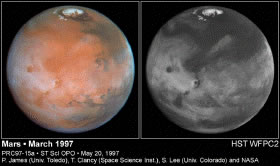This image of Martian clouds illustrates the fact that they are found only in the equatorial region.
Click on image for full size
Image from: Hubble
Martian Clouds
Unlike the Earth, where clouds are found around the entire globe, on Mars, clouds seem to be plentiful only in the equatorial region, as shown in this Hubble telescope image. This may be because water of Mars may only be found at equatorial regions.
As early as 1796 scientists were reporting "yellow", and "white" or "bluish" clouds in the Martian atmosphere. With data from the Mariner 9 mission, scientists could finally prove that the clouds were made of water. Mars Global Surveyor is providing more proof of the existence of water clouds.
More study is needed to understand just how the clouds come and go in the Martian atmosphere. For example, even though clouds have been found, there is no proof it actually rains on Mars! Precipitation of water depends upon how cold it is. The temperatures in the atmosphere may be too cold for water to fall to the ground as droplets.
As a first step in answering some of those questions, Mars Pathfinder took measurements of many clouds in the Martian sky from the surface of Mars itself. Scientists are studying images of the Martian sky from the 80-day mission. The Mars '98 mission will carry a weather satellite, just like the instruments that are used to bring you the weather on the evening news. Then scientists expect to receive much more complete data about Martian weather.
You might also be interested in:

What types of instructional experiences help K-8 students learn science with understanding? What do science educators teachers, teacher leaders, science specialists, professional development staff, curriculum designers, school administrators need to know to create and support such experiences?
...more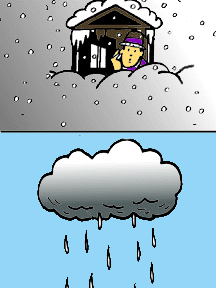
Precipitation (pre-sip-uh-tay-shun) is any form of water that falls to the Earth's surface. Different forms of precipitation include drizzle, rain, hail, snow, sleet, and freezing rain. Precipitation
...more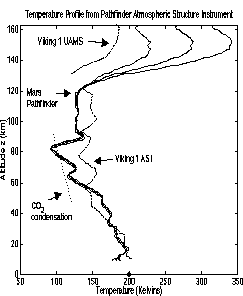
The temperatures in the atmosphere of Mars are doggone cold! This is a graph which shows the temperatures measured in the atmosphere by Mars Pathfinder as it decended through the nighttime air and landed
...more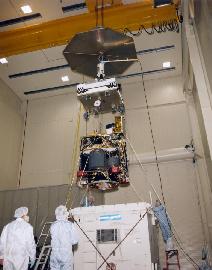
The Mars '98 mission was supposed to study the climate, weather, and surface at the Martian south pole. Mars '98 was to build upon the discoveries of the Mars Pathfinder and Mars Global Surveyor missions
...more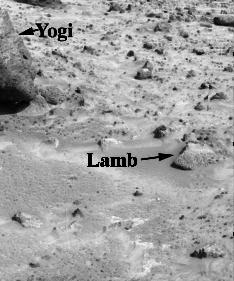
The small, round rock shown here was named The Lamb. It was found as part of Mars Pathfinder's investigation of the surface of Mars. This rock is special because of the soils found around the rock. They
...more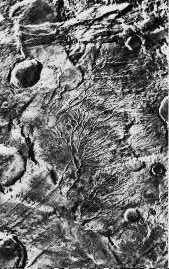
There seems to be no running water on the surface of Mars today even though there is evidence for running water, including river channels such as those shown here, and there are frozen, icy polar caps.
...more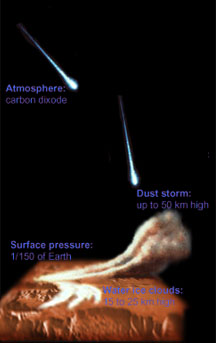
The atmosphere of Mars is much thinner than that of Earth, with a surface pressure averaging 1/100th that at the surface of the Earth. Surface temperatures range from -113oC at the winter pole to 0oC
...more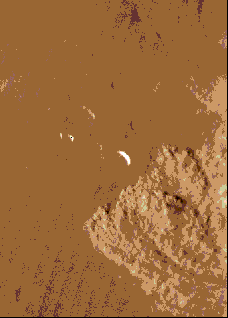
This image shows a local dust storm near the edge of the south polar cap. Viewing of this image at high resolution is recommended. This fascinating image shows dust swirling over a large area. Martian
...more


